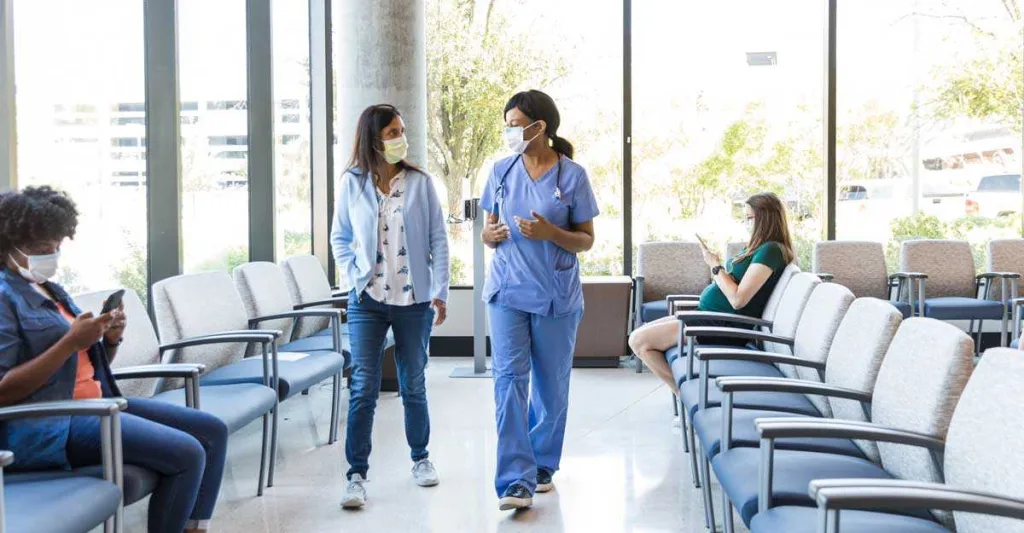Nurses are going beyond a "screen and refer" approach to ensure patients and families get the help they need. Social determinants of health (SDOH) assessments can be used to achieve better outcomes. Imagine you're a nurse in a neonatal ward. You notice a new mother only visits her baby a few times a week and stays only 15 minutes each time. Would that give you a negative opinion of the mom? If so, it probably comes across when you interact with her. "And in turn, that reinforces her feelings of discrimination and medical mistrust," said Vincent Guilamo-Ramos, PhD, MPH, LCSW, RN, ANP-BC, PMHNP-BC, FAAN, Dean and Bessie Baker Distinguished Professor of the Duke University School of Nursing. If you dig deeper, you might find out the real story. It turns out that the baby's parents don't have access to public transportation and can't afford the $20 it costs to park in the hospital's garage. The husband double-parks in front of the hospital while his wife runs in for a very short visit. "If this family's SDOH assessment gave me a broader picture of the social capital and processes at play, I could try to intervene," said Ramos.
New era for SDOH
Not long ago, nurses weren't trained to consider SDOH as part of clinical care. In recent years, some nurses began using a "screen and refer" model to assess patients' needs for food, housing, or transportation. "These domains are important, but they only show part of the picture," said Ramos. "Mitigating harmful SDOH is entering a 'new era.'" Nurses are taking a broader view of how unmet social needs are affecting patients. "We are moving away from focusing mainly on sick care to a greater focus on prevention, health promotion, and restorative care," said Ramos. Nurses now look for clinical indicators that signal a patient may be on a trajectory toward illness. Intervening on SDOH can change that for the better. Front-line nurses must understand three things, suggests AnnMarie Lee Walton, PhD, MPH, RN, OCN, CHES, FAAN, associate professor at Duke University School of Nursing.
- How SDOH affect people's health outcomes
- How to screen for SDOH
- How to access resources to remediate SDOH
There are plenty of resources to help you -- at your own institution, specialty organizations, and at local, state, and federal levels. "Nurses can electronically connect people with community resources to serve their needs," said Walton.
There's a bigger picture
DEI efforts do more than just affect an individual patient's care. Screening for SDOH consistently gives a valuable look at what's going on in the community. "If questions are standardized, it allows population-level data to be collected on unmet health needs," said Walton. Unaddressed SDOH can result in avoidable bad outcomes for patients. The time is now to end this unhealthy cycle of ignoring these factors. "We will never realize health equity in the United States without the help of the nation's nurses," said Michelle Larkin, VP of program management at the Robert Wood Johnson Foundation. Arguably, the front-line nurse role is more vital than any other healthcare provider. "No other segment of the healthcare workforce is better positioned to integrate SDOH into clinical care than nurses," said Ramos.
Make 3 simple changes
Larkin identified three changes you can make in your day-to-day clinical practice to address SDOH:
- Stop using harmful labels when talking about patients.
"Let's stop using [harmful labels] with ourselves and with nursing students. Let's not pass along language that 'others' people to the generations of nurses coming up," urged Larkin. Does a patient keep coming to the clinic with elevated A1C levels? Your nursing colleagues might call that person "non-compliant." Instead, consider the patient's life circumstances. Do they have access to healthy foods? Can they afford their medication? Similarly, a person who comes to the emergency department often might be called a "frequent flier." Likely, that person has a chronic condition and no primary care physician to manage it.
- Listen to patients.
When you're changing a dressing or taking vital signs, patients and family make small talk. A comment about job loss or having no health insurance is valuable information. "Those we care for often provide clues to the obstacles they face to better health," said Larkin.
- Share SDOH information at end-of-shift reports.
If a patient has dangerously high blood pressure, wouldn't you want future healthcare providers to know about it? If your patient has food insecurity or housing instability, other providers should know that, too.
Connect people to resources
Once you learn a patient is experiencing homelessness, can't afford medication, or has no way to get to their next appointment. Then what? "You'll need good information on supportive services," said Larkin. Your patient needs more than a referral. The patient needs to be connected with resources for unmet needs. "To do that, allied health professionals need to be included on the team," said Catherine G. Ling, PhD, FNP-BC, CNE, FAANP, FAAN, associate professor at Johns Hopkins University School of Nursing. Many patients need follow-up care after discharge but have no transportation. A social worker could solve this problem by arranging for transport. "When the office calls to remind the patient of the appointment, the ride is verified as well," said Ling. That simple intervention could prevent a bad outcome or unnecessary hospitalization. Making social determinants of health part of your clinical practice gets to the heart of the nursing role. Simply listening and taking action can dramatically affect your patient's well-being -- and that of their family and the community as well. Is your organization addressing social determinants of health? Comment below and talk to your fellow nurses about this topic. Download the Nurse.com social networking app today. 






